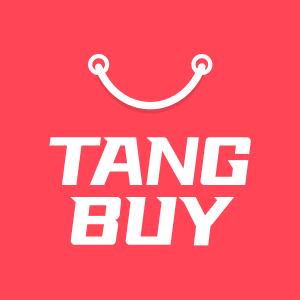How to Launch a T-Shirt Dropshipping Business in 2025

You can launch business in T-shirt dropshipping in 2025 with just a laptop and a creative idea. The market is booming, with global T-shirt revenue expected to hit $64.5 billion in 2025:
Metric | Value | Year |
|---|---|---|
Projected Global T-shirt Revenue | $64.5 billion | 2025 |
Annual Growth Rate (CAGR) | 3.24% | 2024-2028 |
Dropshipping stands out because you do not need to buy stock or handle shipping. You only pay when someone orders. Picking the right niche, creating a standout brand, choosing a trusted supplier, and smart marketing help you build a business with little risk and low costs.
Key Takeaways
Dropshipping lets you start a T-shirt business for less money. You do not need to keep stock or send out orders yourself.
Picking a clear niche helps your brand get noticed. It also helps you find loyal customers.
Choose a good supplier by looking at product quality. Check how fast they deliver and read customer reviews first.
Make simple and bold designs with easy tools like Canva. You can also use Printful Design Maker.
Build a strong brand with a name people remember. Use the same logo and have a clear style to earn trust.
Set up an online shop that is easy to use. Make sure it loads fast, works on phones, and has a simple checkout. This helps you sell more.
Use social media, paid ads, and SEO to reach your audience. These tools help your business grow.
Give quick and friendly customer service. This can turn complaints into happy customers and build a good name.

Why Launch Business in 2025
Market Trends
You might wonder why 2025 stands out for starting a T-shirt dropshipping business. The answer lies in the exciting trends shaping the market. People now want more than just a basic tee. They look for unique, sustainable, and personalised options. Eco-friendly T-shirts attract buyers who care about the planet. Vintage and retro styles are making a comeback, especially with young adults. Minimalistic designs are also popular, showing that sometimes less really is more.
Gamers love T-shirts that show off their favourite games. Businesses use custom T-shirts for branding and promotions. The custom T-shirt market is growing fast, with a projected annual growth rate of 11.1% from 2023 to 2030. You can find many popular styles, such as crew neck, long-sleeve, and V-neck, which work well for different designs. Dropshipping platforms now use automation and AI tools to help you spot trends, manage orders, and keep customers happy. This makes it easier for you to run your business and stay ahead of the competition.
Tip: Keep an eye on trending designs and use tools that help you spot what’s hot. This way, you can offer T-shirts that people really want.
Dropshipping Benefits
Dropshipping gives you a big advantage over traditional retail. You do not need to buy stock upfront. You only pay for a T-shirt after someone places an order. This means you avoid the risk of unsold inventory. You can offer a wide range of designs without worrying about storage space. If a style becomes popular, you can add it quickly. If something does not sell, you can remove it just as fast.
You do not need a warehouse or a big team. Your supplier handles packing and shipping. This saves you time and money. You can run your business from home or anywhere with internet access. You get paid as soon as a customer orders, which helps your cash flow. Dropshipping makes it easy to test new ideas and respond to trends.
Profit Potential
T-shirt dropshipping in 2025 offers strong profit potential. T-shirts are cheap to produce and easy to ship, so you keep more of what you earn. You can target many different groups, from fitness fans to fashion lovers. The business model is simple and flexible. You can start small and grow at your own pace.
Here’s a quick look at why 2025 is the perfect time to start:
Key Reason | Explanation |
|---|---|
Low Startup Costs | You need little money to begin, making it easy to get started. |
Flexibility | You choose your hours and scale your business as you wish. |
Work from Anywhere | You can run your shop from home or while travelling. |
Scalability | You can expand to new markets and add more products easily. |
High Profit Margins | T-shirts offer gross margins of around 40%. |
Quick Product Build Time | You can launch new designs in just a few months. |
Unlimited Income Potential | Your earnings depend on your effort and creativity. |
Ecommerce Growth | Online shopping keeps growing, giving you more chances to sell. |
Simple Business Model | Dropshipping is easy to set up and manage, even for beginners. |
The print-on-demand and eCommerce markets are booming. For example, the global print-on-demand market is growing at over 25% each year. The UK eCommerce market is also set to more than double by 2030. With these trends, you have a great chance to build a successful T-shirt dropshipping business in 2025.
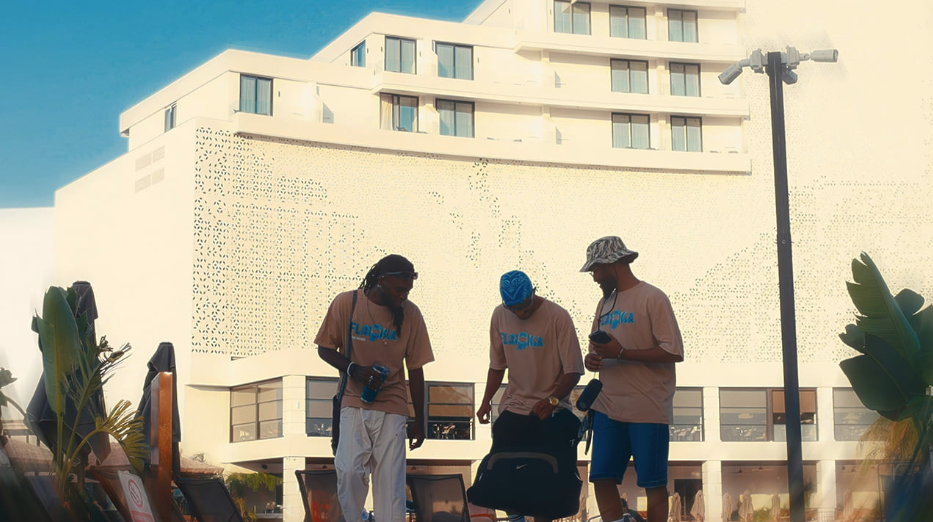
Market Research
Before you start designing T-shirts or building your shop, you need to do some research. This step helps you find out what people want and how you can stand out. Let’s break it down.
Find Niche
You want your T-shirt business to feel special. That means picking a niche—a group of people with shared interests or identities. When you focus on a niche, your brand feels more relatable and your designs connect better.
Here are some ways to find a profitable niche:
Think about your own passions and experiences. If you love dogs or vintage anime, you already understand what fans want.
Check out what’s selling on eBay. Look for T-shirts with lots of completed sales. This shows real demand.
Use Amazon’s search and best seller lists. These can help you spot popular themes and styles.
Try tools like Oberlo, SaleHoo, or Printful. These platforms show trending products and help you find reliable suppliers.
Focus on groups with strong interests. For example, eco-conscious minimalists, dog dads, or small business girl bosses often look for T-shirts that match their lifestyle.
Tip: The more specific your niche, the easier it is to stand out and attract loyal buyers.
Here are some niche ideas to get you started:
Eco-conscious minimalists who care about sustainability 🌱
Dog dads and rescue pet lovers 🐶
Vintage anime fans who love nostalgia
Small business girl bosses who want to show off their hustle
Target Audience
Once you pick a niche, you need to know who you’re selling to. This is your target audience. The more you know about them, the better you can design T-shirts they’ll love.
Key things to look at:
Age
Gender
Marital status
Race
Education level
Employment
Income
Location
You can use tools like Google Analytics and Facebook Insights to learn about your audience. These tools show you who visits your site and what they like. When you know your audience, you can create a marketing persona. This helps you choose the right designs, write better ads, and pick the best places to sell.
Note: Segmenting your audience by these details helps you target your marketing and make products that fit their needs.
Here’s a simple table to help you organise your audience research:
Demographic Factor | Example Segment |
|---|---|
Age | 18-24, 25-34 |
Gender | Female, Male, Non-binary |
Location | London, Manchester, UK-wide |
Interests | Eco-living, Anime, Pets |
Validate Ideas
You have a niche and you know your audience. Now, you need to check if your T-shirt ideas will actually sell. This is called validation.
Try these steps to test your ideas:
Upload one T-shirt design that matches your niche.
Order a sample to check the print quality and take real photos.
List your T-shirt in your online shop and share it on social media and in niche communities.
Watch for likes, comments, shares, and pre-orders. These show real interest.
Change your design or message if you don’t get much response. If people love it, you can add more designs or sizes.
You can also:
Run polls on Instagram Stories to let your followers pick colours or slogans.
Offer a special deal, like free shipping for the first buyers.
Work with micro-influencers who talk to your target audience.
Try small paid ads to see if people click and buy.
Tip: Ask for feedback in Facebook groups or on Reddit. People in these communities give honest opinions. Crowdfunding sites like Kickstarter can also help you test demand and raise money before you launch.
Print-on-demand services make it easy to test ideas without buying lots of stock. This way, you only invest in designs that people really want.
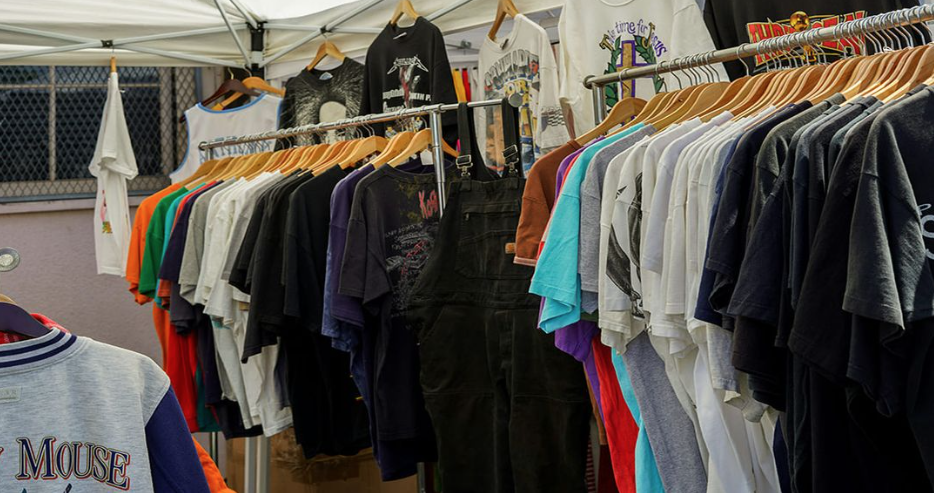
Branding
Building a strong brand helps your T-shirt dropshipping business stand out in a crowded market. You want people to remember you, trust you, and come back for more. Let’s break down the three key parts of branding: your company name, your logo, and your brand identity.
Company Name
Your company name is the first thing people see. It sets the tone for your whole business. Picking the right name can make a big difference. Here’s what you should look for in a great T-shirt brand name:
Simple and easy to spell, so customers remember and share it.
Relevant to your target audience and their interests.
Reflects your brand’s story, mission, or values, like creativity or sustainability.
Unique and original, so you stand out from other brands.
Legally available, with a matching domain and no trademark issues.
Catchy and easy to pronounce.
Not too complicated, vague, or overly descriptive.
Tip: Use tools like business name generators, SEO keyword research, and domain checkers to help you brainstorm. Once you have a shortlist, ask your target audience for feedback. Their opinions can help you pick a name that really connects.
Logo Design
A professional logo makes your brand look trustworthy and memorable. You want your logo to look good on every T-shirt and across all your marketing. Here are some best practices for designing your logo:
Keep the design balanced. Place your logo so it fits the shirt without taking over.
Adjust the size for different shirt sizes. Smaller shirts need smaller logos.
Use high-resolution files. Vector or clear PNG files work best for crisp prints.
Pick colours that stand out against the shirt. For example, white logos on dark shirts.
Test your logo on mockups before printing. This helps you see how it looks in real life.
You can also try these ideas:
Use bold fonts for easy reading.
Place small logos on the left chest for a classic look.
Add custom neck labels or branded packaging for a professional touch.
Note: Avoid complicated designs or trendy memes that might not last. Stick to something that matches your brand’s personality.
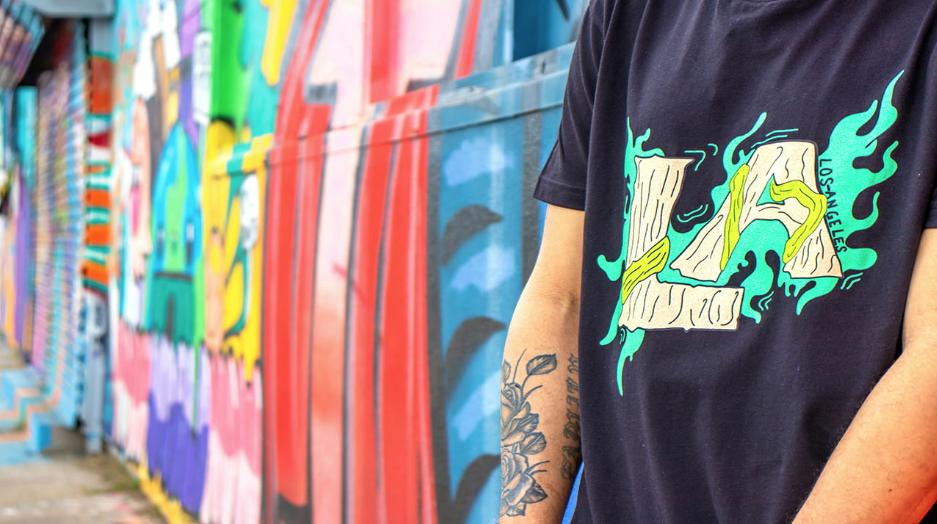
Brand Identity
Brand identity is more than just a name and logo. It’s the feeling people get when they see your shop or wear your T-shirts. Consistency is key. Research shows that most buyers expect the same experience everywhere they find your brand. When you keep your style, colours, and message the same, people start to trust you.
To build a strong brand identity:
Tell your story. Share what makes your brand special and what you stand for.
Use the same colours, fonts, and style across your website, social media, and packaging.
Show your brand’s personality. Are you playful, bold, or eco-friendly? Let that shine in your designs.
Create brand guidelines. Write down your rules for logo use, colours, and tone of voice.
Know your audience. Make sure your message and visuals match what they care about.
Tip: Look at brands like H&M or Patagonia. They use the same colours and style everywhere, which helps people recognise them instantly.
Branding takes time, but it pays off. When you get it right, your T-shirt business will stand out and attract loyal fans.

Select Supplier
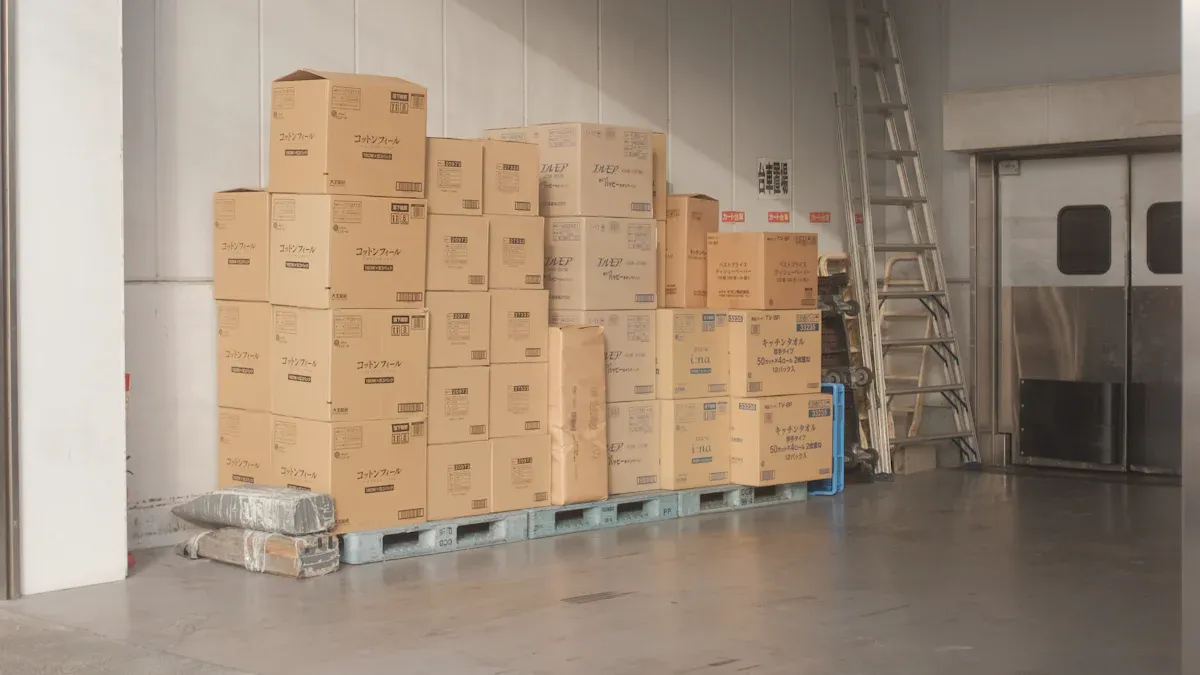
Picking the right supplier is very important for your T-shirt dropshipping business. The supplier you choose will change your product quality, shipping speed, and how happy your customers are. Let’s see what choices you have and how to pick the best one.
Print-on-Demand Options
There are many print-on-demand suppliers you can use in 2025. Each supplier has different things to offer. Here are some of the best suppliers you should know:
Printful: No upfront costs, quick worldwide shipping, and many integrations.
Printify: Flexible, saves money, and lets you change print providers worldwide.
Shirtworks: UK-based, high quality, ethical, and links with many platforms.
Tee Hatch: Canadian-based, fast shipping to the US and Canada, works with Shopify and WooCommerce.
Thrive Screen Printing: Special screen prints and quick global shipping.
Rockline Dropship: Good for music-themed T-shirts and ships worldwide.
CJ Dropshipping: Big product range, branding services, and global reach.
Sellfy: All-in-one e-commerce platform with lots of sizes.
AutoDS: Gives automation and works with big e-commerce platforms.
Some sellers also use big companies like Shein, Walmart, AliExpress, and Target. These companies have lots of products and fast shipping. You can use both print-on-demand suppliers and general dropshipping companies. This helps you offer more products and stay ahead.
Tip: Try to choose suppliers that fit your brand’s values and target customers. For example, Shirtworks is a good pick if you want ethical and UK-based production.
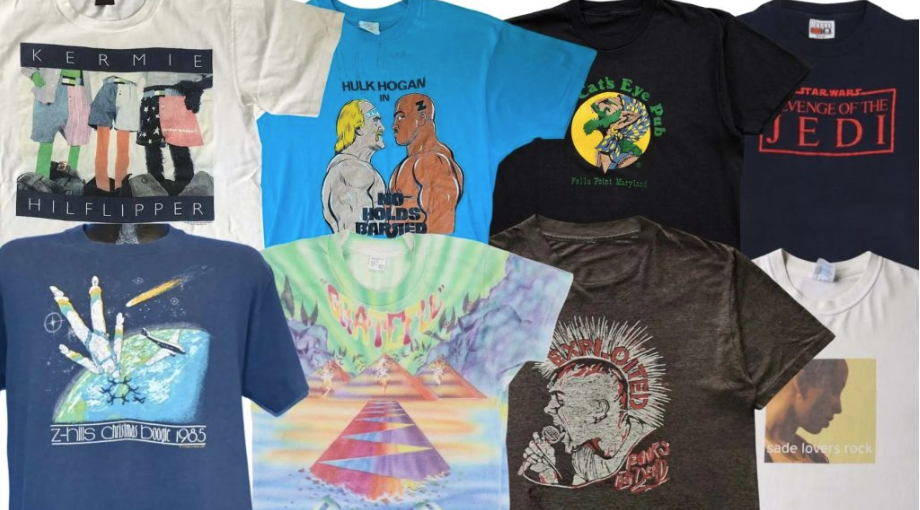
Compare Features
Suppliers are not all the same. You need to look at them closely before picking one. Here is an easy way to compare them:
Product Range: See if they have the styles and sizes you want.
Quality: Check the materials and printing methods.
Delivery Time: Find out how quickly they make and send orders.
Location: Pick suppliers near your main customers for faster delivery.
Reviews: Read what other sellers say about them.
Sample Products: Order samples to check the quality yourself.
Returns and Refunds: Make sure their rules protect you and your buyers.
Customer Service: Test how fast they reply to questions.
Experience: Choose suppliers with a good history.
Personalisation: See if you can customise products or packaging.
You can use a table like this to compare your top suppliers:
Supplier | Product Range | Quality | Delivery Time | Location | Reviews | Customisation |
|---|---|---|---|---|---|---|
Printful | Wide | High | Fast | Global | Great | Yes |
Printify | Wide | Good | Fast | Global | Good | Yes |
Shirtworks | Medium | High | Fast (UK) | UK | Great | Yes |
Quality Check
You want your customers to really like their T-shirts. This means you must check the quality before selling. Here is how you can do it:
Always order samples first. Try them on, wash them, and look at the print.
Look for certifications like GOTS, Fair Trade, or OEKO-TEX®. These show the supplier cares about ethics and safety.
Use online tools to check the supplier’s history and reviews.
Ask for business licences or proof of experience if you want to be sure.
Check the T-shirt for strong seams, bright colours, and no loose threads.
Compare the colour to Pantone standards if you want perfect matches.
Look at the labels for correct branding and care instructions.
Note: Some sellers use outside inspectors or random checks to make sure every batch is good.
If you follow these steps, you can pick a supplier who helps your business grow and keeps your customers happy.
Create Designs
Making your T-shirt designs is where you can be creative. You do not have to be an artist to make cool graphics. The right tools and some good tips help you make designs people want to wear and show off.
Design Tools
There are many ways to make T-shirt graphics in 2025. Some tools are easy for beginners. Others have more features for detailed work. Here are some popular choices:
Tool Name | Description | Pros | Cons | Pricing |
|---|---|---|---|---|
Free tool with clipart, fonts, patterns, and mockup generator | Easy for newbies, embroidery support | Fewer options than pro software | Free | |
Adobe Photoshop | Professional software with advanced editing and AI features | Powerful, Creative Cloud integration | Expensive, steep learning curve | Subscription-based |
Canva | Drag-and-drop tool with templates and fonts | Simple, free version available | Less advanced, limited customisation | Free and paid plans |
GIMP | Free, open-source editor with strong photo editing | No cost, customisable | Harder for beginners, older interface | Free |
Fotor | AI image generator, templates, mobile app | Many assets, mobile-friendly | Free plan has ads, limited features | Free and paid plans |
Inkscape | Free vector graphics editor | Great for scalable designs | Steep learning curve | Free |
PlaceIt | Templates and mockups, easy to use | No skills needed, wide selection | Limited control, some paid features | Subscription-based |
Tip: If you are new, try Canva or Printful Design Maker. They are simple and help you make designs fast.
Best Practices
You want your T-shirt designs to get noticed and sell well. Here are some tips to help you:
Look at what is popular. Use Google Trends or check social media for ideas.
Try out different designs. Start with a few and see which ones people like most.
Stick to your niche. Make designs that your audience will love, like pets, gaming, or eco-friendly themes.
Use clear images and bold fonts. Your design should look good online and in person.
Keep it simple. Simple designs often sell better than busy ones.
Make your listings easy to find. Use clear titles, descriptions, and tags.
Price your shirts fairly. Check what others charge and match your quality.
Let people customise if you can. Many people like to add their own touch.
Remember: A special design and a clear message can make your shirt a top seller.
Copyright
It is important to protect your own designs. Copyright lets you control how your art is used. When you make a design, you own the copyright. If you want more protection, you can register your design. This helps if someone copies your work.
Always make your own designs or use public domain images.
Check the licence if you use stock images or fonts. Make sure you are allowed to use them.
Use Google Reverse Image Search to see if your design is unique.
If someone copies your work, you can send a letter or report them.
For extra safety, talk to a legal expert about trademarks for your brand and logo.
Note: Copying someone else’s design can get you in trouble. You could get fined or face legal problems. Always be original and protect your work.
With good tools, smart design choices, and legal care, you can make T-shirts people love and keep your business safe.
Build Store
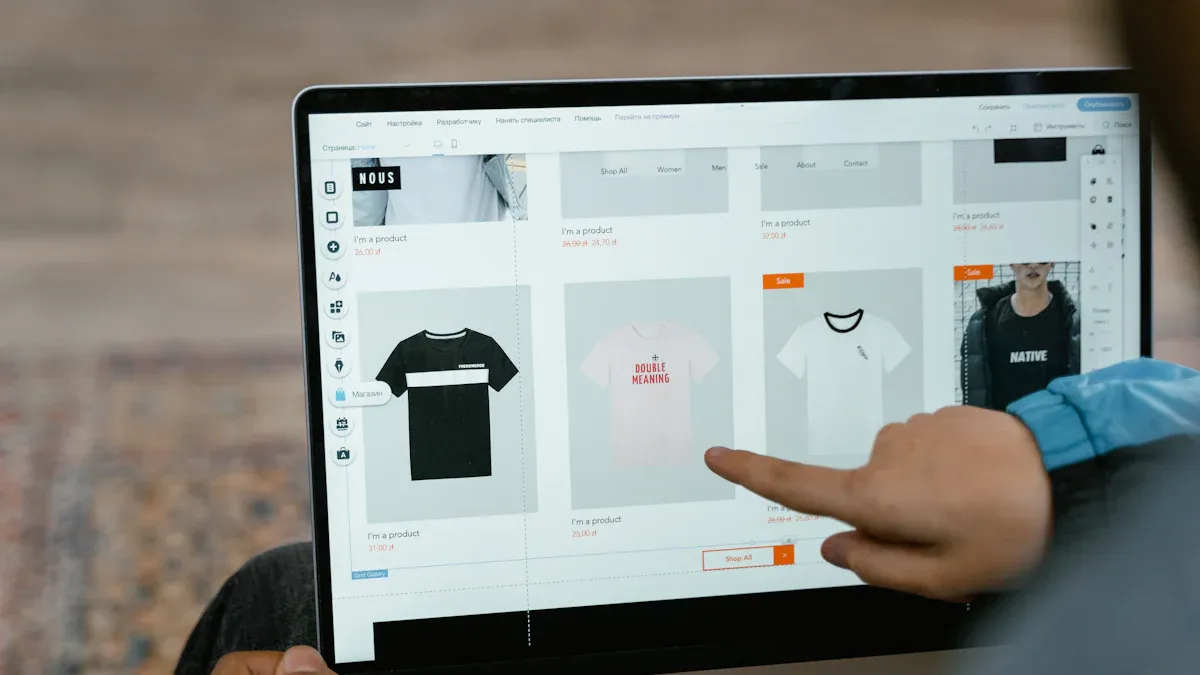
Choose Platform
Picking the right platform is a big step for your T-shirt dropshipping business. You want a platform that fits your needs and helps you grow. Here are some of the most popular choices in 2025:
Shopify: Easy to use, lots of apps, and great for beginners. You can set up your shop quickly and manage everything in one place.
WooCommerce: Works with WordPress. You get more control and flexibility. It is good if you want to customise your shop.
BigCommerce: Handles big shops well. You get strong tools for growth and lots of built-in features.
Wix: Drag-and-drop builder. You can design your shop how you like. It is simple and good for small shops.
HugePOD: Very popular for T-shirt dropshipping in 2025. You get high-quality printing, a wide product range, and no minimum order. HugePOD supports global shipping and easy integration with big platforms like Amazon. Many T-shirt brands choose HugePOD for its quality and custom options.
Tip: Think about your budget, how much you want to customise, and where your customers live. Try free trials to see which platform feels right for you.
Store Setup
Once you pick your platform, you need to set up your shop. Start with a clean, mobile-friendly design. Most people shop on their phones now, so your site must look good and load fast. Use clear menus and simple navigation. Make it easy for shoppers to find what they want.
Add high-quality product mockups. Show your T-shirt designs from different angles. Use real photos if you can. Write short, catchy product descriptions. Tell people what makes your shirts special.
Set up your payment methods. Offer choices like credit cards, PayPal, and Apple Pay. Make checkout quick and simple. The fewer steps, the better.
Don’t forget your returns policy. Write it in plain language. Put it where customers can see it. This builds trust and helps people feel safe buying from you.

Essential Features
Your shop needs the right features to turn visitors into buyers. Here are some must-haves:
Fast site speed 🚀: People leave slow sites. Make sure your shop loads quickly.
Mobile-friendly design 📱: Your shop should look great on any device.
Easy navigation: Clear menus help shoppers find products fast.
High-quality mockups: Show off your T-shirts with sharp images.
Simple checkout: Fewer clicks mean more sales.
Social proof: Add customer reviews and ratings to build trust.
Clear returns policy: Let buyers know they can return items if needed.
SEO optimisation: Use keywords in your titles and descriptions so people can find you on Google.
Personalised branding: Offer custom labels or packaging inserts to make your brand stand out.
Efficient shipping: Use global fulfilment centres for fast delivery.
You can also boost your sales with smart marketing tools:
Build an email list. Send special offers and reminders to people who leave items in their cart.
Run ads on Facebook, Instagram, and Google. Use retargeting to reach people who visited your shop before.
Work with micro-influencers. They can show your T-shirts to new fans and help you grow.
Remember: A professional, easy-to-use shop makes people want to buy from you. Focus on the basics, and you will see your T-shirt business grow.
Legal & Finance
Sorting out the legal and financial side of your T-shirt dropshipping business might sound tricky, but you can handle it step by step. You need to pick the right business structure, set up payment systems, and stay on top of your taxes. Let’s break it down so you can get started with confidence.
Business Structure
Choosing the right business structure shapes how you run your shop and how much risk you take on. Here’s a quick look at the most common options:
Business Structure | Description | Legal Implications & Liability | Taxation Implications | Control & Management |
|---|---|---|---|---|
Sole Proprietorship | Owned and run by one person. Easiest to set up. | You have unlimited personal liability. | You pay tax as part of your personal income. | You make all the decisions. |
Limited Liability Company (LLC) | Protects your personal assets from business debts. Flexible to manage. | Limits your personal risk. | Pass-through taxation, so no double tax. | You or managers can run the business. |
General Partnership | Two or more people share control and profits. | All partners share liability. | Pass-through taxation. | Decisions shared; trust is key. |
Corporation | Separate legal entity with shareholders and directors. | Limited liability for owners, but more rules to follow. | Double taxation (company and personal). | Complex structure, less direct control. |
Most people start with a sole proprietorship because it’s simple. If you want more protection, an LLC is a smart choice. Always talk to a legal expert or accountant before you decide.
Tip: Think about how much risk you’re willing to take and how big you want your business to grow.
Payments
You want your customers to pay easily and safely. That means picking the right payment gateway. Here’s a table to help you compare some of the top choices:
Payment Gateway | Availability (Countries) | Transaction Fees | Number of Accepted Currencies |
|---|---|---|---|
Amazon Pay | 18 | 2.9% + $0.30 USD (domestic), 3.9% + $0.30 USD (international) | 12 |
Authorise.net | 33 | 2.9% + $0.30 USD or lower with merchant account | 12 |
2Checkout | 200+ | 3.5%+ per transaction, higher on some plans | 100+ |
Adyen | 38+ | $0.10 USD + payment method fee, minimum invoice | 30+ |
Apple Pay | 70+ | 1.5% + $0.25 to $15 USD per transaction | 70+ |
Braintree | 40+ | 0.75% - 3.49% + $0.49 USD per transaction | 130+ |
WePay | US, UK, Canada | 2.9% + $0.30 USD per transaction | 2 |
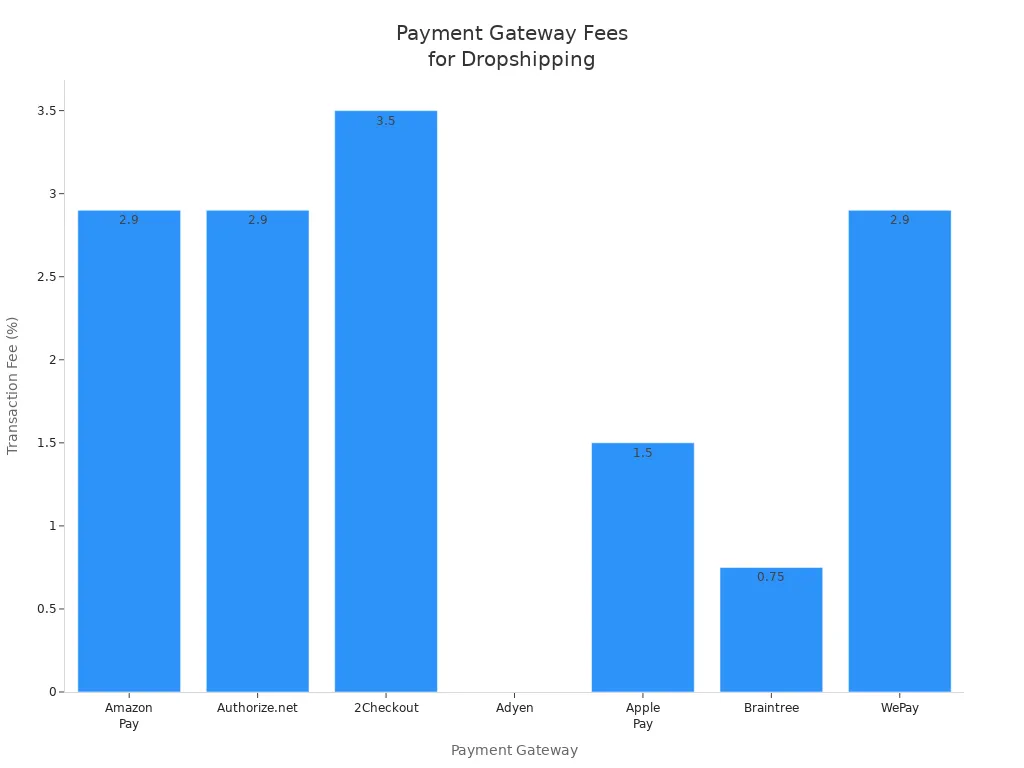
You can see that fees and currency options vary. Pick a gateway that works in your country and matches your customers’ needs. Most platforms like Shopify and WooCommerce let you add several gateways, so you can offer more choices.
Taxes
Taxes can feel confusing, but you can manage them with a bit of planning. You need to think about income tax, sales tax, and sometimes customs duties if you sell internationally.
Here’s what you need to know:
Nexus matters. If you have a strong connection to a state or country (like lots of sales or a warehouse), you may need to collect sales tax there.
Register for sales tax permits where you have nexus.
Collect sales tax based on where your customer lives and where your supplier ships from.
Use resale certificates to avoid paying sales tax to your supplier when you buy shirts for resale.
If you cross certain sales thresholds (like £85,000 in the UK or $100,000 in some US states), you must collect and pay sales tax in those places.
Each country and state has different rules, so check local laws or ask a tax expert.
Note: Platforms like Shopify and Etsy often collect and pay sales tax for you, but you still need to check if you’re charging the right amount, especially for international orders. Overcharging can put off customers.
Stay organised, keep good records, and ask for help if you’re unsure. Getting your legal and financial basics right helps your T-shirt business grow without stress.

Marketing & Launch
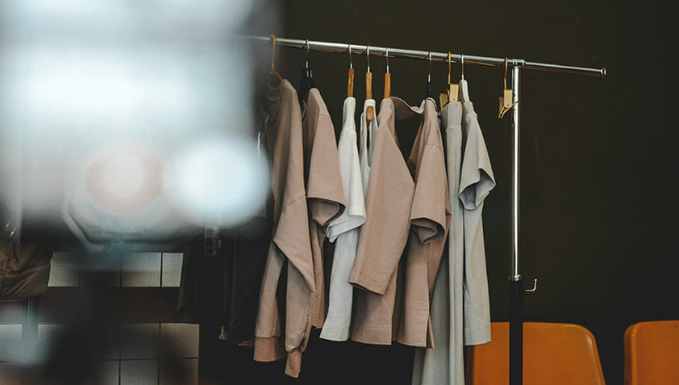
Social Media
Social media is where your T-shirt dropshipping business comes to life. You want to show off your designs, connect with your audience, and build excitement. In 2025, some platforms work better than others for T-shirt brands.
TikTok and Instagram lead the way. Both platforms focus on visual and short-form video content. You can use reels, stories, and quick product demos to grab attention. Show how your T-shirts look in real life. Share behind-the-scenes clips of your design process. People love seeing the story behind the brand.
YouTube Shorts is another great place for short videos. You can reach new fans who enjoy quick, fun content.
Facebook (Meta) still matters, especially for paid ads and retargeting. You can also use Facebook groups to build a community around your niche.
Reddit Ads offer a less crowded space. You can target specific communities that match your niche. This helps you reach people who already care about your theme.
LinkedIn works best for B2B marketing. Most T-shirt dropshipping brands focus on B2C, so you might not need it.
Tip: Consistency is key. Post regularly and keep your content authentic. People trust brands that feel real and honest.
You should also work with micro-influencers. These are people with smaller but loyal followings. They can help you reach your target audience and build credibility. Try to create partnerships where influencers wear your shirts and share their honest opinions.
Short-form videos work best for showing off your T-shirts. Highlight the benefits, show real people wearing them, and keep things fun. Use hashtags and trends to boost your reach.
Paid Ads
Paid ads help you reach more people fast. You do not need a huge budget to get started. Focus on the platforms where your audience spends time.
Instagram and TikTok Ads let you target people by age, interests, and location. Use eye-catching videos or images. Show your T-shirts in action.
Facebook Ads are great for retargeting. You can remind people who visited your shop to come back and buy.
Reddit Ads can be cost-effective. You can target niche communities and get your shirts in front of the right people.
Start with small test campaigns. Watch which ads get the most clicks and sales. Adjust your budget and try new ideas based on what works. Do not rely only on automated tools. Take time to manage your ads and respond to comments. This builds trust and shows you care about your customers.
Note: Paid ads work best when you combine them with organic content. Use both to grow your brand and boost sales.
Launch Business
You have your designs, your shop, and your marketing plan. Now it is time to launch business and make your first sales. A strong launch can set you up for long-term success.
Here are some best practices to help you launch business with impact:
Pick a specific niche. This helps you stand out and attract loyal fans.
Set your prices based on value. Think about the quality of your shirts and the uniqueness of your designs.
Check what your competitors charge. Adjust your prices to stay competitive.
Promote your launch on Instagram, TikTok, and Facebook. Focus on the platforms where your audience hangs out.
Partner with influencers to spread the word. Their followers trust their opinions and may want to try your shirts.
Use SEO strategies. Add keywords to your product titles and descriptions so people can find you on Google.
Run creative marketing campaigns. Offer a launch discount or a giveaway to get people excited.
Track your results. Use analytics to see which designs and ads work best. Listen to customer feedback and make changes as needed.
You can also connect your dropshipping account to platforms like Shopify, Etsy, TikTok Shop, or WooCommerce. This helps you reach more customers and manage orders easily. Focus on quality prints, fast shipping, and a smooth shopping experience. Happy customers are more likely to come back and tell their friends.
Remember: The first days of your launch matter most. Make a splash, listen to your customers, and keep improving your business.
SEO
You want people to find your T-shirt shop when they search online. That’s where SEO (Search Engine Optimisation) comes in. Good SEO helps your store show up on Google and brings in more visitors without paying for ads. Let’s break down how you can boost your rankings and get more sales.
Start with the Right Keywords
Think about what your customers type into Google. Maybe they search for “funny dog T-shirts” or “eco-friendly tees for teens.” Use tools like Google Trends or SEMrush to find these phrases. Long-tail keywords work best. These are longer, more specific phrases that match what shoppers want. For example, “retro anime T-shirt UK” will bring in buyers who know what they want.
Tip: Make a list of 10-20 keywords that fit your niche. Use them in your product titles, descriptions, and even image names.
Optimise Your Product Pages
Every product page is a chance to attract new customers. Here’s what you should do:
Write unique titles (60-70 characters) with your main keyword.
Add a catchy meta description (up to 160 characters) to get more clicks.
Describe your T-shirts in detail. Tell people about the fabric, fit, and what makes your design special.
Use high-quality images. Add alt text with keywords so your shirts show up in Google Images.
A simple table can help you remember the key actions:
SEO Element | What to Do |
|---|---|
Title Tags | Use main keywords, keep it short and clear |
Meta Descriptions | Write unique, catchy summaries for each product |
Product Descriptions | Highlight features, benefits, and what makes your T-shirt stand out |
Image Optimisation | Use clear photos and keyword-rich alt text |
Internal Linking | Link to related products or blog posts to keep visitors exploring your shop |
Make Your Site Easy to Use
Google loves websites that are easy to use. So do your customers. Make sure your shop loads quickly and looks good on phones. Use clear menus and simple navigation. If people can’t find what they want, they’ll leave. That hurts your ranking.
Organise your site: Home > Category > Product.
Add a search bar and clear labels.
Keep your checkout process short and simple.
A fast, mobile-friendly shop helps you keep visitors and turn them into buyers.
Build Trust with Backlinks
Backlinks are links from other websites to your shop. They tell Google that your store is trustworthy. You can get backlinks by working with bloggers, influencers, or review sites in your niche. Ask them to feature your T-shirts or write about your launch business. The more quality links you have, the higher you’ll rank.
Avoid Common SEO Pitfalls
Some platforms, like Shopify, have limits. You might see long URLs or duplicate product pages. These can confuse search engines. Here’s how you can fix them:
SEO Challenge | What Happens | How to Fix It |
|---|---|---|
Duplicate Pages | Search engines see too many similar pages | Use canonical tags to show the main page |
Long URLs | URLs look messy and hard to remember | Use redirects or shorteners for cleaner links |
Limited Customisation | Hard to edit some SEO settings | Optimise what you can: titles, descriptions, images |
Note: Always check your site for broken links or missing pages. Fixing these helps your SEO and keeps customers happy.
Content Marketing for Extra Traffic
Write blog posts or guides about your niche. For example, “How to style vintage anime T-shirts” or “Best eco-friendly gifts for dog lovers.” This content brings in visitors who might not be ready to buy yet but could return when they want to launch business with a new look.
Keep Improving
SEO is not a one-time job. Check your rankings every month. Update your keywords and add new content. Listen to your customers. If they ask questions, answer them in your product descriptions or blog posts. This keeps your shop fresh and helps you stay ahead.
Remember: Good SEO brings in free traffic and helps you launch business with confidence. Focus on what your customers want, and Google will reward you.
Operations & Growth
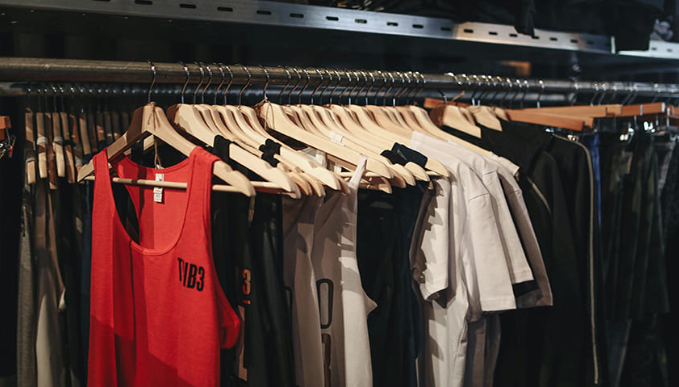
Order Management
You want your T-shirt dropshipping business to run smoothly. Efficient order management saves you time and keeps your customers happy. Start by choosing tools that automate the boring stuff. Inventory Source is a great option. It syncs your inventory, routes orders, and uploads products for you. You do not need to worry about stockouts because it updates your product availability in real time. Many shop owners say they cut their workload in half with this tool. You can even double your order volume without hiring more people.
Zendrop is another smart choice. It automates inventory management and order fulfilment. You get access to a network of trusted suppliers, so your T-shirts arrive quickly and look great. Zendrop also connects easily with Shopify, which makes your life easier. You can focus on growing your brand instead of chasing orders.
Tip: Automate as much as you can. This gives you more time to design new shirts and talk to your customers.
Customer Service
Good customer service sets you apart from other T-shirt shops. People remember how you treat them. Always reply quickly to questions. Use friendly language and keep your answers clear. If someone has a problem, fix it fast. Offer easy returns and refunds. This builds trust and encourages people to buy again.
Try using chatbots for simple questions. They can answer things like “Where is my order?” at any time of day. For bigger issues, step in yourself. Personal touches, like a thank-you note or a follow-up email, make customers feel special.
A simple table can help you track customer service tasks:
Task | How Often | Who Handles It |
|---|---|---|
Reply to emails | Daily | You or your team |
Process returns | As needed | You |
Update FAQs | Monthly | You |
Check reviews | Weekly | You |
Remember: Happy customers tell their friends. Unhappy ones tell everyone.
Scale Up
When your shop starts to grow, you need to scale up. Automation helps you handle more orders without extra stress. Use tools that sync your inventory and manage orders for you. This way, you do not miss sales or send out-of-stock items.
Think about hiring help for packing or customer service as your business gets bigger. You can also add new products, like hoodies or tote bags, to reach more buyers. Keep an eye on your best-selling designs and focus on what works.
Look for ways to improve. Ask your customers for feedback. Try new marketing ideas. Test different suppliers if you want faster shipping or better quality.
Scaling up feels exciting. With the right systems, you can grow your T-shirt business and reach new heights.
Challenges & Solutions
Supplier Issues
You might find that working with suppliers is one of the trickiest parts of dropshipping. Sometimes, suppliers send out the wrong T-shirts or take too long to ship. Other times, the quality does not match what you promised your customers. These problems can hurt your reputation and lead to unhappy buyers.
To avoid these headaches, always do your homework before picking a supplier. Look for companies with lots of good reviews and a wide range of products. Order samples first. This way, you can check the material and print quality yourself. If you spot any problems, you can fix them before your customers notice.
Keep in touch with your suppliers. Ask questions and make sure they understand your standards. If things go wrong, be ready to switch to a new supplier. Having a backup plan keeps your business running smoothly.
Here’s a quick table to help you remember what to look for:
Supplier Problem | What You Can Do |
|---|---|
Slow shipping | Choose suppliers with fast delivery and good reviews |
Poor quality | Order samples and check before selling |
Out-of-stock items | Work with suppliers who update stock in real time |
Bad communication | Pick suppliers who reply quickly and clearly |
Tip: Good suppliers help your business grow. Bad ones can hold you back. Always test before you trust.
Competition
The T-shirt dropshipping market is busy. Many people want to sell cool shirts online. You might worry about standing out or keeping your prices low enough to compete.
The best way to beat the competition is to focus on a niche. Pick a group of people with a shared interest, like retro gamers or eco-friendly shoppers. Create designs just for them. When you target a niche, you do not have to fight with every other T-shirt shop. You can also charge a bit more because your shirts feel special.
Keep an eye on what other shops are doing. Check their prices and see which designs sell best. Try to offer something different, whether it’s a unique design, better quality, or faster shipping.
Remember: You do not need to be the cheapest. You need to be the most memorable for your audience.
Branding Consistency
Branding helps people remember your shop. If your logo, colours, and style change all the time, customers get confused. They might not trust your business or come back for more.
To keep your branding strong, use the same colours, fonts, and tone everywhere—on your website, social media, and even your packaging. Write down your brand rules so you do not forget them. Make sure every product and post matches your brand’s personality.
Focus on giving your customers a great experience. Clear return policies and friendly service help build trust. When people know what to expect, they feel safe buying from you again.
Note: Consistent branding makes your shop look professional. It also helps you stand out in a crowded market.
Customer Complaints
Customer complaints can feel stressful, but you can turn them into chances to build trust. Every business gets complaints. What matters is how you handle them. If you respond well, you can turn unhappy shoppers into loyal fans.
Common Complaints You Might Face
Here are some of the most frequent issues you may see in your T-shirt dropshipping business:
Late deliveries 🚚
Wrong size or colour sent
Poor print or fabric quality
Damaged items
Confusing return process
No reply to emails or messages
Tip: Most customers just want to feel heard. A quick, honest reply can calm most situations.
How to Handle Complaints Like a Pro
You do not need to panic when you get a complaint. Follow these steps to keep things smooth:
Reply quickly
Customers expect a fast answer. Try to reply within 24 hours. Even if you do not have a solution yet, let them know you are looking into it.Listen and show empathy
Read the message carefully. Say sorry for the trouble. Use phrases like, “I understand how frustrating this must be.”Check the facts
Look at the order details. Check with your supplier if needed. Make sure you know what went wrong before you reply with a solution.Offer a clear solution
If the shirt is late, give an update and a new delivery date. If the item is wrong or damaged, offer a replacement or refund. Make the process easy for the customer.Follow up
After you fix the problem, check in with the customer. Ask if they are happy with the solution. This shows you care.
Example Table: Complaint and Solution
Complaint | What You Can Do |
|---|---|
Late delivery | Apologise, update on shipping, offer discount or free shipping next time |
Wrong size or colour | Send correct item, offer free return |
Poor quality | Replace item, review supplier quality |
Damaged on arrival | Send replacement, improve packaging |
No reply to messages | Set up auto-replies, check inbox daily |
Note: Always keep your tone friendly and professional. Never blame the customer or your supplier in your reply.
Preventing Complaints
You can stop many complaints before they start. Use clear product descriptions and size charts. Show real photos of your shirts. Set honest delivery times. Keep your returns policy simple and easy to find.
If you get the same complaint often, look for patterns. Maybe you need a new supplier or better packaging. Fix the root cause to keep your customers happy.
Happy customers come back and tell their friends. Handle complaints well, and you will build a strong, trusted brand.
You now know how to launch business in T-shirt dropshipping. Start by picking your niche, then build your brand and choose a reliable supplier. Create eye-catching designs and set up your online shop. Use smart marketing to reach your audience. Stay organised and keep improving.
Ready to take the first step? The T-shirt dropshipping world is full of chances for you to grow and succeed.
FAQ
What is T-shirt dropshipping?
You sell T-shirts online without keeping stock. When someone buys a shirt, your supplier prints and ships it for you. You focus on designs and marketing. The supplier handles the rest.
How much money do I need to start?
You can start with as little as £100–£300. Most costs go to your website, samples, and marketing. You do not need to buy stock upfront.
Do I need design skills to launch?
No, you do not. You can use free tools like Canva or Printful’s Design Maker. Many platforms offer templates. You can also hire freelance designers if you want something unique.
How do I choose the right supplier?
Look for suppliers with good reviews, fast shipping, and quality products. Always order samples first. Check if they offer the styles and sizes you want.
Tip: Reliable suppliers help you avoid unhappy customers and bad reviews.
Can I sell worldwide?
Yes, you can. Most print-on-demand suppliers ship globally. Check shipping times and costs for each country. Some suppliers have fulfilment centres in different regions for faster delivery.
What if a customer wants to return a T-shirt?
You set your own return policy. Most suppliers accept returns for damaged or wrong items. Make your policy clear on your website. Good customer service builds trust.
How do I get people to find my shop?
Use social media, SEO, and paid ads. Post your designs on TikTok and Instagram. Add keywords to your product pages. Work with influencers in your niche.
Consistent marketing helps you reach more buyers and grow your brand.

TangBuy: A Smarter Way to Dropship in 2025
If you're looking to stay competitive with dropshipping in 2025, speed and trend-awareness are key. TangBuy helps you stay ahead with real-time product trends, fast fulfilment, and factory-direct sourcing. With over 1 million ready-to-ship items, 24-hour order processing, and seamless Shopify integration, TangBuy makes it easier to test, scale, and succeed in today's fast-moving eCommerce landscape.
See Also
How To Successfully Start A Dropshipping Venture In 2025
Profitable Dropshipping Concepts To Earn Income In 2025
Top Money-Making Dropshipping Markets To Explore In 2025
